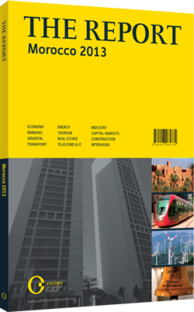A long wait: The new mining code should bring about big changes
For at least 20 years, there has been talk about how modern laws would turn Morocco’s mining industry around. This now looks increasingly like reality. Authorities say the kingdom’s 62-year-old mining code could finally be retired in 2013. Industry players and authorities agree that its longevity has stifled investment in a kingdom historically famed for its soil’s riches. The Phoenicians, the Romans and, much later, the Portuguese came to Morocco to mine for such minerals and metals as silver, copper, iron ore and gold. A lot of those riches still remain untapped today.
HISTORY: The code, written while Morocco was still a French protectorate, is inspired by France’s own legislative framework for mining. That framework started off as an imperial law in 1810, evolved into a code in 1956 and has been reviewed three times since then. The latest change was in 1994. French authorities are currently looking to review France’s legislative framework for mining, saying it is outdated. But the Moroccan mining code remains in force. The new code is meant to address investor concerns and open up Morocco to investors in the sector. The government views the revised legislation as part of a general wave of new mining codes across Africa and the developing world. In Morocco, one of Africa’s four most diversified economies, metals and minerals, outside phosphate – of which the state has the monopoly – account for roughly 1% of GDP. But authorities hope the new code will change that, and have made increasing the mining sector’s contribution to the GDP one of the legislative reform’s objectives. The new code has not yet been fully drafted or publicised. Nevertheless, officials have generally been upfront about some of the changes that it will likely include upon completion.
COMING CHANGES: First, it increases the size of area prospection and exploitation permits cover. When it comes to the case of prospecting permits, Fouad Douiri, the ministry of energy and mines, told press in 2012 the new code would extend the area allowed from a maximum of 250 sq km to 2400 sq km. The code enlarges the scope of minerals and metals that can be mined. One proposed version had added such products as rare earths or uranium, a mineral that could be a game-changer for Morocco, which imports 95% of its energy. However, there is also the possibility that the code would open up mining to all substances except phosphates and radioactive materials. The code is also expected to borrow a leaf from mining codes of neighbouring Algeria and uranium-producing Niger to require a post-mining clean up plan. The plan will outline how the investor intends to restore the exploitation site when exiting and make investors set funds aside for this process.
REMOVING THE DISTINCTIONS: Morocco currently has separate regimes for quarries and mines. The applicable regime is determined by the products that are extracted. Products that could be used in construction are considered to belong to the quarries regime, and the rest belonged to mines. The new law may expand the list of substances which fall under the quarries regime. The differentiation is important, because it determines if the investor requires a permit. In Morocco, mining permits are legally defined as temporary real assets and mining deposits are deemed to belong to the state’s domain, even if found on private property. However, quarry deposits remain the property of the owner of the land, so that any transaction would occur between the investor and the owner. “The new code would help boost investment,” Wacef Bentaibi, senior associate at the law firm Naciri & Associés Allen & Overy, told OBG. “We hope the upcoming decrees that organise the implementation of the future code will be enacted swiftly, because investors want to know what they sign up for.” Important segments of laws are often left to supplementary decrees of application, which can take years to come into effect.
You have reached the limit of premium articles you can view for free.
Choose from the options below to purchase print or digital editions of our Reports. You can also purchase a website subscription giving you unlimited access to all of our Reports online for 12 months.
If you have already purchased this Report or have a website subscription, please login to continue.

